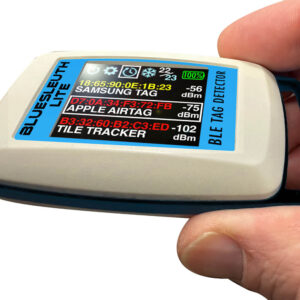Your cart is currently empty!
Could ‘Smart Walls’ Be Border Wall Solution?
The U.S. has temporarily overcome a record-breaking government shutdown but another one looms in the not-too-distant future. This latest example of bipartisan stubbornness culminates over the border wall controversy. Trump wants a physical wall and democrats don’t, but both sides have proposed a ‘smart wall’ in some fashion as a possible compromise. Could ‘smart walls’ be our new border wall solution?
Basic barriers have been effective to some degree since the Great Wall of China but new tech has a way of overcoming old tech. Ladders can scale walls and tunnels can go dig under them. Physical walls can be built higher and sturdier but walls cannot stop things like wireless. That might seem like an insignificant distinction but when two parties on opposite sides of a wall can freely communicate, it can create a large gap in security. Just ask any warden about their top prison issues and they will undoubtedly mention cell phones.
“That is a major safety issue,” said Deputy Attorney General Rod Rosenstein in his speech at a recent American Correctional Association conference. “Cellphones are used to run criminal enterprises, facilitate the commission of violent crimes and thwart law enforcement.” According to the same Washington Post story, the Justice Department will soon be jamming cell phones and drones used to facilitate crimes inside and outside of prison. These measures might seem extreme until you consider how easy it is for inmates to threaten prosecutors, target law enforcement agents and plan elaborate prison escapes using drone-delivered cell phones.
I’m comparing prison security to the border wall security for two reasons. First, they are both weakened by secret communications between two parties. Second, my company has been working directly with the correctional industry for a decade now using wireless detection technology so I see a mutually beneficial solution for everyone involved with the border wall debate except, of course, for the criminals. Full disclosure: my company sells thousands of cell phone detectors to military, government, law enforcement and correctional facilities every year. But my intimacy with these organizations and this technology only lends more credibility to my proposal.
Part of the reason why the SMART Act proposed by Rep. Will Hurd (R-Texas) stalled in Congress was because it brought a machine gun to a sniper’s tower. Most ‘smart wall’ proposals include provisions for an array of sensors without any real proof of effectiveness for this application. RADAR, LIDAR, motion detection, video cameras, tunnel detection, drone detection and more have all been connected to ‘smart walls’ but all of these expensive proposals ignore one of the most ubiquitous and easiest thing to detect – cell phones.
Cell phones are everywhere so cell phone detectors are also everywhere. Conference rooms, testing centers, railway locomotives, call centers, state embassies and many other unlikely places already rely on wireless detectors to sniff out cellular use that could compromise privacy, safety and security. Many illegals approaching borders might be traveling light but they can all carry a cheap ‘burner’ phone to communicate with those on the other side of that border. Illegals, citizens and even coyotes (those who help smuggle people across borders illegally) use phones to communicate, negotiate and arrange for covert border crossings. As illegals approach the barrier, they are in cellular range and eager to communicate with those on the other side of that border. This is where cell phone detection could play a key role in preventing border breaches.
Motion sensors can be falsely triggered by animals or loose debris and surveillance drones can only stay airborne for short durations before requiring fresh battery power. The array of proposed sensors in the SMART Act adds up to $500,000 per mile and that’s before the cost of the actual wall! Conversely, cell phone detection receivers are relatively inexpensive and operate all day, every day. And when you add a directional antenna to the receiver, you increase the detection range substantially in one direction. This means that smart walls will not only detect all cellular texts, voice or data transmissions up to a half a mile away from the border, it also means that cell phones belonging to citizens and businesses in border towns will not be falsely trigger a response from nearby borer patrols. A few thousand inexpensive and covert, networked cellular detectors would provide coverage for the entire border or even less used to focus on weaker spots that see higher levels of penetration.
Of course the devil is in the details so no one is suggesting that our border breaches and bickering will be solved so easily and affordably, but it’s reassuring to know that ‘smart walls’ don’t have to break the bank to be smart.

Scott Schober
CEO | Author | Speaker at Berkeley Varitronics Systems
Scott Schober presents at cybersecurity and wireless security conferences for banking, insurance, transportation, construction, telecommunications and law enforcement industries. He has overseen the development of dozens of wireless test, security, safety and cybersecurity products used to enforce a “no cell phone policy” in correctional, law enforcement, and secured government facilities. Scott regularly appears on network news programs including Fox, Bloomberg, Good Morning America, CNN, MSNBC, NPR and many more. He is the author of 'Senior Cyber', 'Cybersecurity is Everybody's Business' and 'Hacked Again', the “original hacker’s dictionary for small business owners” - Forbes Magazine.
Our Newsletter
Lorem ipsum dolor sit amet, consectetur adipiscing elit. Aliquam mattis ligula vitae leo scelerisque, sit amet feugiat ex venenatis.
"*" indicates required fields
Latest Posts
Our Best Sellers
How can we help?
Lorem ipsum dolor sit amet, consectetur adipiscing elit. Nunc dictum aliquet justo sit amet consectetur. In tempor lobortis ante vitae ornare. Praesent feugiat magna at tempor consequat. Aenean in iaculis libero, aliquam imperdiet mi.









Leave a Reply